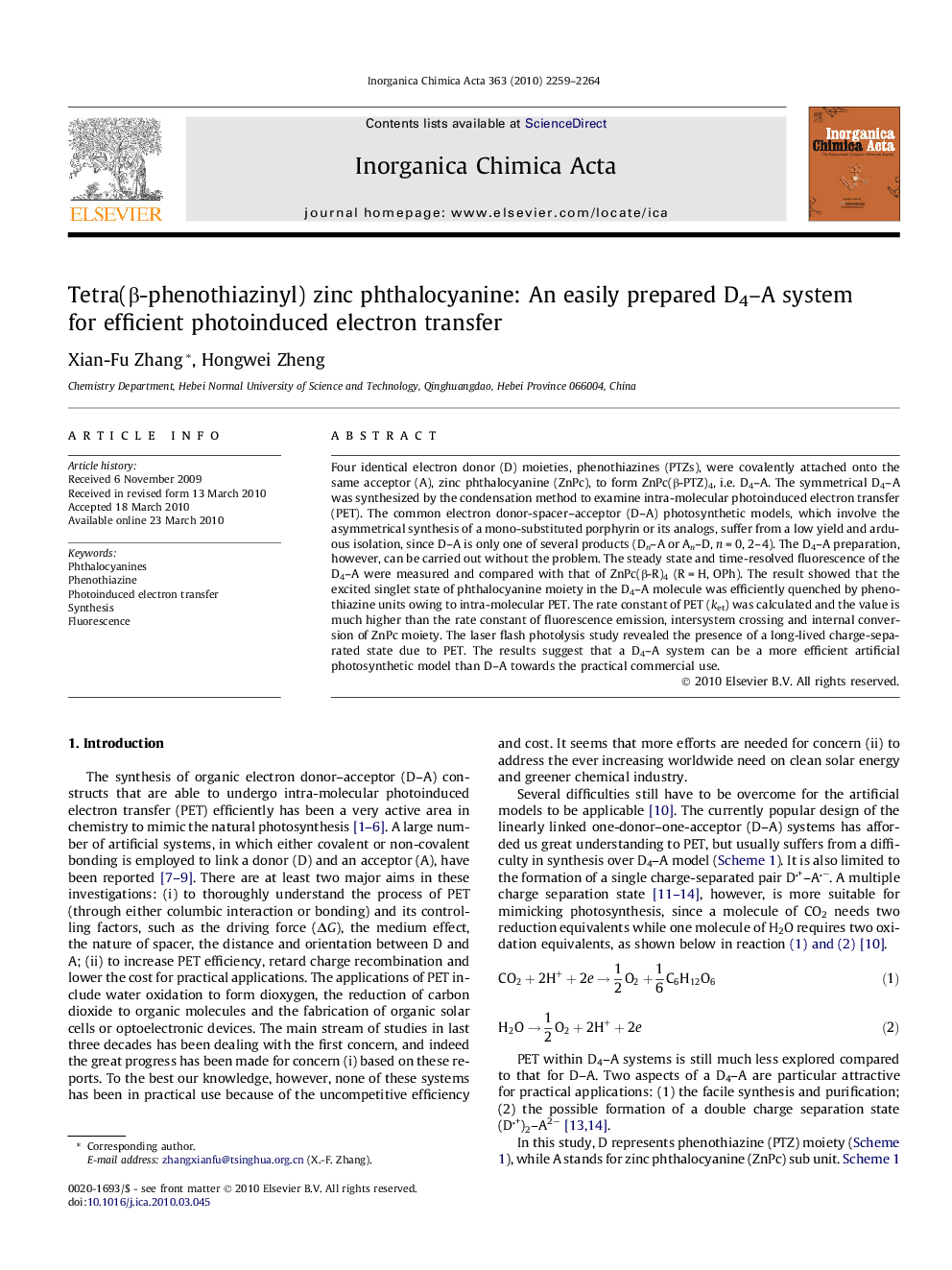| کد مقاله | کد نشریه | سال انتشار | مقاله انگلیسی | نسخه تمام متن |
|---|---|---|---|---|
| 1312578 | 975467 | 2010 | 6 صفحه PDF | دانلود رایگان |

Four identical electron donor (D) moieties, phenothiazines (PTZs), were covalently attached onto the same acceptor (A), zinc phthalocyanine (ZnPc), to form ZnPc(β-PTZ)4, i.e. D4–A. The symmetrical D4–A was synthesized by the condensation method to examine intra-molecular photoinduced electron transfer (PET). The common electron donor-spacer–acceptor (D–A) photosynthetic models, which involve the asymmetrical synthesis of a mono-substituted porphyrin or its analogs, suffer from a low yield and arduous isolation, since D–A is only one of several products (Dn–A or An–D, n = 0, 2–4). The D4–A preparation, however, can be carried out without the problem. The steady state and time-resolved fluorescence of the D4–A were measured and compared with that of ZnPc(β-R)4 (R = H, OPh). The result showed that the excited singlet state of phthalocyanine moiety in the D4–A molecule was efficiently quenched by phenothiazine units owing to intra-molecular PET. The rate constant of PET (ket) was calculated and the value is much higher than the rate constant of fluorescence emission, intersystem crossing and internal conversion of ZnPc moiety. The laser flash photolysis study revealed the presence of a long-lived charge-separated state due to PET. The results suggest that a D4–A system can be a more efficient artificial photosynthetic model than D–A towards the practical commercial use.
Four identical electron donor (D) molecules, phenothiazines (PTZs), were covalently attached onto the same acceptor (A), zinc phthalocyanine (ZnPc), to form a symmetrical D4–A model compound without worrying the presence of Di–A (i = 1,2,3). The steady state and time-resolved fluorescence, as well as laser flash photolysis studies revealed the efficient intra-molecular photoinduced electron transfer and formation of a long charge separation state.Figure optionsDownload as PowerPoint slide
Journal: Inorganica Chimica Acta - Volume 363, Issue 10, 20 June 2010, Pages 2259–2264